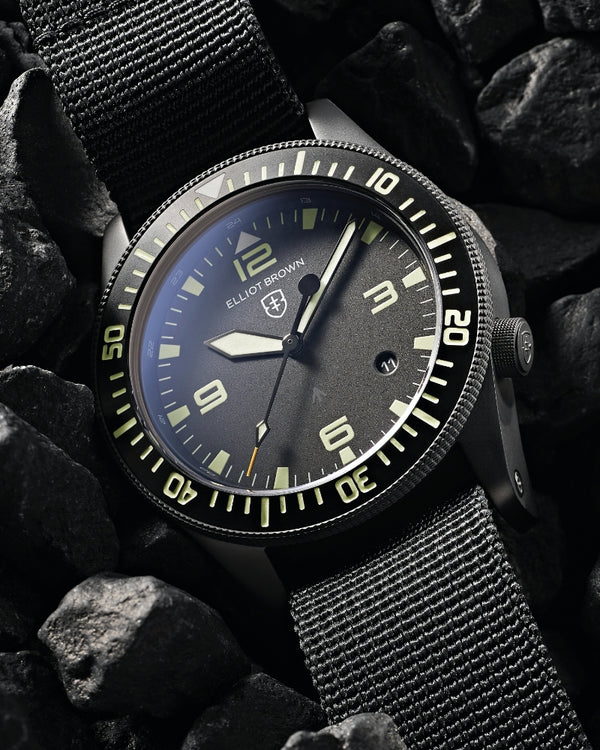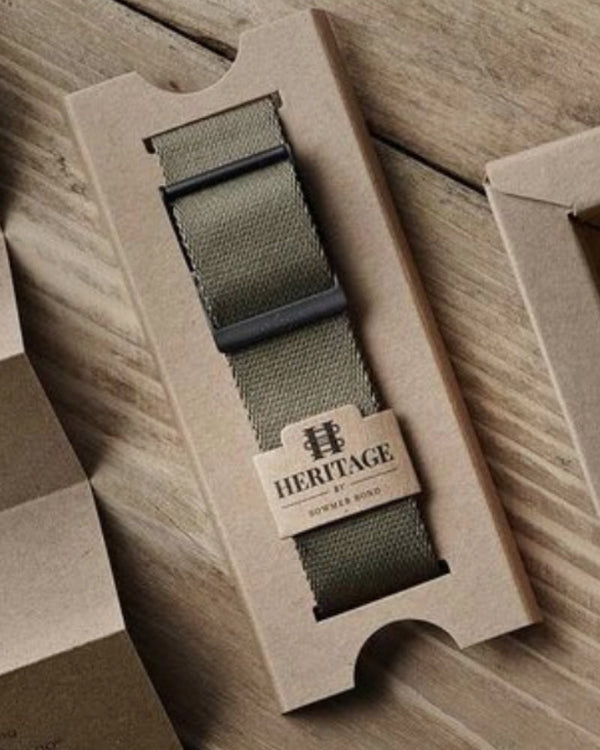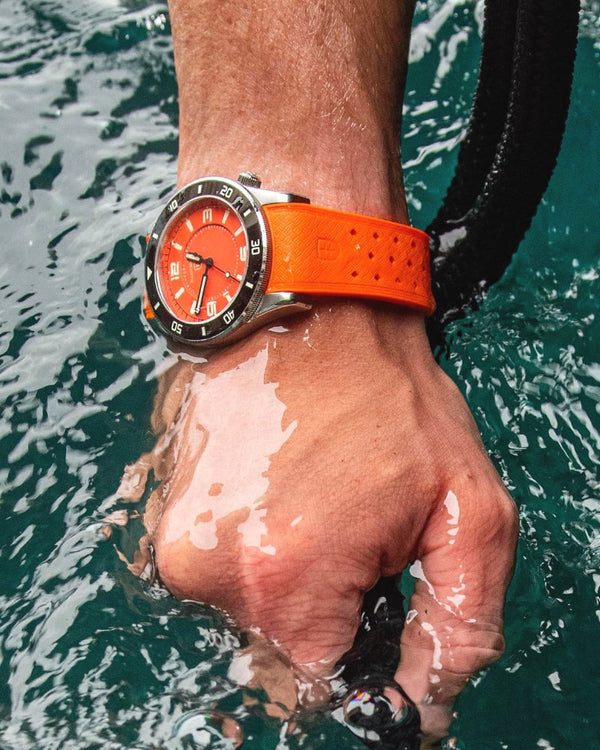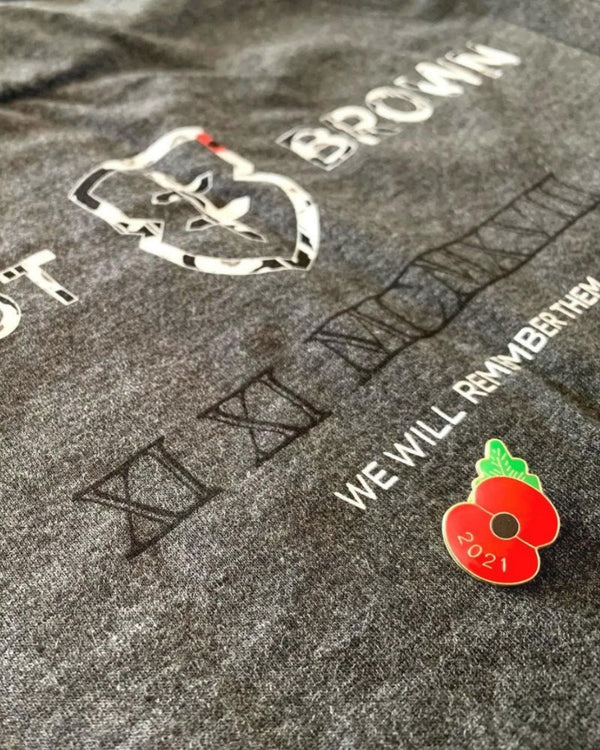Case Hardened Watches; The Design Process Behind the EBINOX

When we opened our doors in 2013 with a mission to create the world's most durable watches, we had no idea just how powerful that niche would become. We saw ourselves as watchmakers and engineers with unique experiences that allowed us to develop and think differently. However, in our eyes at least, we were still just a watch business creating watches with original features that would allow them to cope with harsh environments and treatment.
As time has marched on and the accolades and achievements wracked up, the tool watch niche has turned into our superpower.
Whenever we dive into our product development schedule, striving for tougher everything, better function, and longer-lasting componentry, we often have ideas that are relevant to existing models by way of incremental improvements in addition to new collections. Our unbreakable, easy-change strap bars are an example of a development that was part of the OG Holton Professional spec, designed for the toughest military use. This is now utilised across every collection because the bars are much more convenient to use, making the watch and strap bond stronger.

We initially launched with Canford and Bloxworth – both of which have developed into their own pillars within the EB hierarchy. Tyneham (now discontinued) was a natural development of Canford as its slightly smaller elegant classic cousin, housing a high-grade automatic movement with an almost hidden power reserve and a case-hardened external fixed bezel, designed to take all the knocks and protect the crystal. That was our first foray into hardening stainless steel for a specific function and it’s fair to say that judging by the number of almost unmarked Tyneham's we see for occasional servicing, it worked as intended – prolonging the life of the watch in terms of looking box-fresh for longer. That was back in 2016
When the opportunity to develop the Holton Professional landed, the same kind of built-in longevity was an essential component to keep the all-important markings on the bezel looking fresh and instantly recognisable at a glance for years even after harsh treatment. Every Holton model ever produced, except several very early prototypes is fitted with a case-hardened steel bezel insert. It’s a go-to detail that you might never know about, but years down the tracks, it’ll still be doing its thing, hidden in plain sight and that makes us happy.
 Armed with a good few years of case hardening expertise, we were discussing the roadmap for the Holton Auto GMT collection – a watch we consider to be a real sweet spot and surely one of the most rugged, capable watches in existence. When asked how tough our watches are, we often joke about challenging all-comers to a game of watch conkers and in the past we have been witness to frivolous challenges with expensive results (for the challengers). More to the point these are ‘normal’ 316L stainless steel watches and they’re already tough as nails. Imagine a watch that’s tougher than nails! That would be a thing and so the idea was cemented in our development plans. A fully case-hardened model with every bit of existing Holton military grade DNA in-tact; shock protection, 200m pressure resistance, unbreakable straps and bars, 8-hour lume etc, but with the entire watch now case hardened taking it to the next level. It would surely be about as good as it gets in the real world of rugged tool watches, wouldn't it?
Armed with a good few years of case hardening expertise, we were discussing the roadmap for the Holton Auto GMT collection – a watch we consider to be a real sweet spot and surely one of the most rugged, capable watches in existence. When asked how tough our watches are, we often joke about challenging all-comers to a game of watch conkers and in the past we have been witness to frivolous challenges with expensive results (for the challengers). More to the point these are ‘normal’ 316L stainless steel watches and they’re already tough as nails. Imagine a watch that’s tougher than nails! That would be a thing and so the idea was cemented in our development plans. A fully case-hardened model with every bit of existing Holton military grade DNA in-tact; shock protection, 200m pressure resistance, unbreakable straps and bars, 8-hour lume etc, but with the entire watch now case hardened taking it to the next level. It would surely be about as good as it gets in the real world of rugged tool watches, wouldn't it?
Ah, I hear you say, why would I need a fully hardened watch when your watches are already tough enough? The answer is you probably don’t, but you can and I can tell you that in wearing one, you get this innate sense of wearing something invincible – it’s a comforting feeling. Necessary? No. Nice to have? Absolutely.
 How hard actually is it? It’s approximately 6 times harder than 316L marine-grade stainless which itself isn’t the softest of metals but is a great material to work with as it’s extraordinarily durable.
How hard actually is it? It’s approximately 6 times harder than 316L marine-grade stainless which itself isn’t the softest of metals but is a great material to work with as it’s extraordinarily durable.
To achieve the case hardening, the finished bare watch-case is subjected to a number of heat and quenching treatments, so that every part is hardened including the inner machined surfaces that house the movement shield system and we also include the bezel and crown. The metal under the surface remains untreated but as the entire exterior is toughened that’s irrelevant for use as a watch.
An unexpected upside of hardening the steel this way is how tactile the metal surface becomes to the touch. Before the case hardening process, the case is vapour blasted using tiny particles of ceramic ‘sand’ to create a beautifully technical matt surface. If you looked at it under a microscope it would appear like a cross between a golf ball and fine sand paper. The hardening process smooths the edges of the microscopic indentations ever so slightly to create one of the most satisfying surfaces we have ever touched. Despite being matt, the hardened surface feels smoother and silkier than a polished case and has a strange effect on those who have the chance to compare the two in the metal. Almost without exception there’s a vocal oooh from the hardened case surface feel. Strange fact but absolutely true.
Why EBINOX? — it’s EB-Inox - inox is short for acier inoxydable, which is French for stainless steel.

















